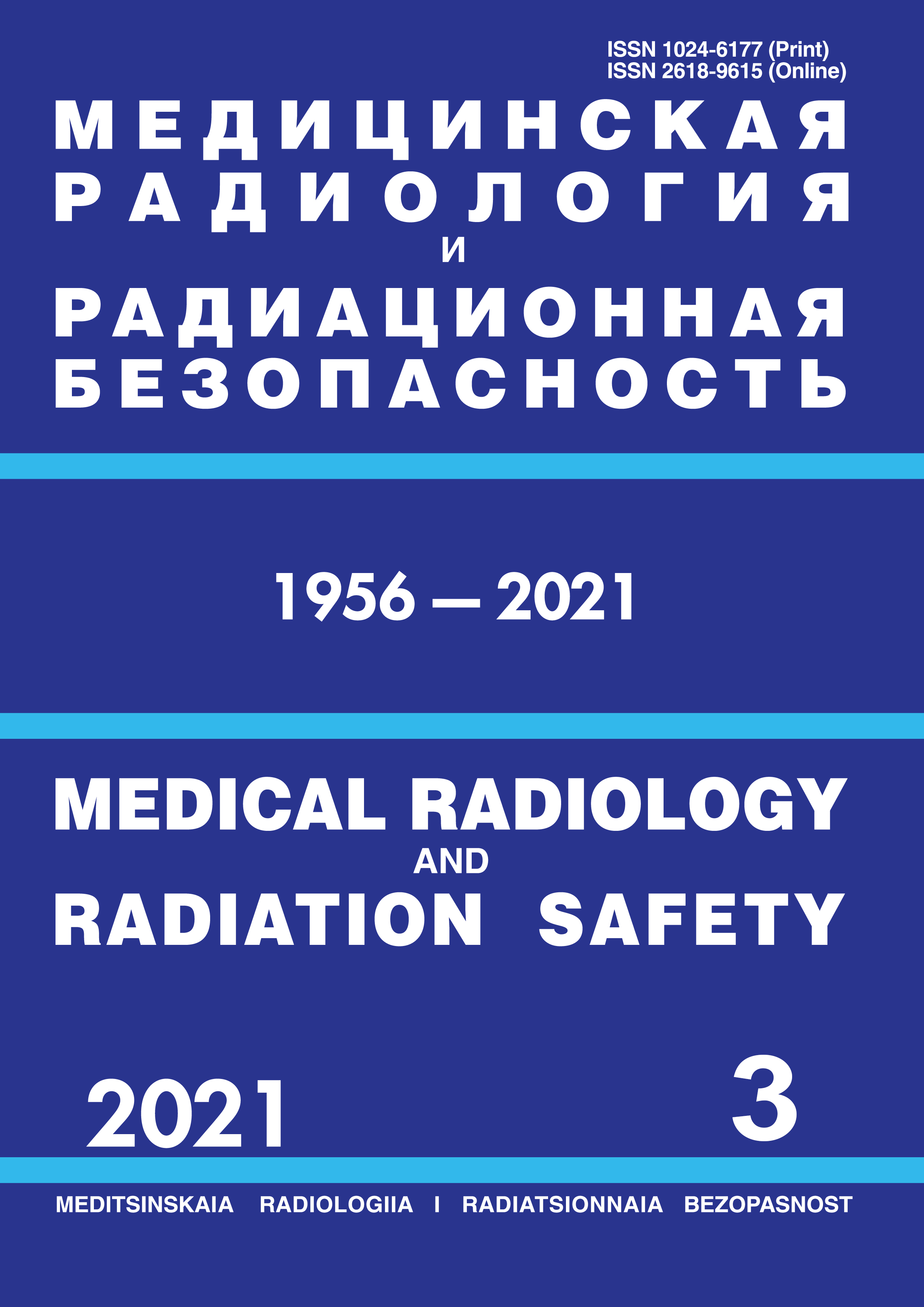Russian Federation
Russian Federation
Russian Federation
Russian Federation
Russian Federation
Russian Federation
CSCSTI 76.33
CSCSTI 76.03
Russian Classification of Professions by Education 31.06.2001
Russian Classification of Professions by Education 31.08.08
Russian Classification of Professions by Education 32.08.12
Russian Classification of Professions by Education 14.04.02
Russian Library and Bibliographic Classification 534
Russian Library and Bibliographic Classification 51
Russian Trade and Bibliographic Classification 5712
Russian Trade and Bibliographic Classification 5734
Russian Trade and Bibliographic Classification 6212
Russian Trade and Bibliographic Classification 5708
Purpose: Determination of the volume and sequence of radiation studies in the treatment of patients with displacement of the articular disc of the temporomandibular joint (TMJ)and myofascial pain disorders. Material and methods: The study included 48 patients with displacement of the articular disc of the TMJ and myofascial pain disorders. Clinical criteria for articular displacement were confirmed by MRI and CBCT. Studies of the function of the masticatory muscles were carried out at the Synapsis electromyograph. All patients underwent complex treatment, including relaxation of the masticatory muscles and relief of pain using injections of botulinum toxin in the actual masticatory, temporal and lateral pterygoid muscles (LPM), followed by repositioning split therapy. For the introduction of muscle relaxant in LPM, we have developed and applied external periarticular injection access to LPM. The method is based on reaching the zone of joint attachment of the upper and lower heads of the LPM with MRI navigation. Surveillance continued for up to 12 months with MRI monitoring of the position of the articular disc. Results: The stages of treatment of SJS of the TMJ with control use of MRI and CT, as well as a method for the administration of botulinum toxin under MRI navigation, have been developed. The first stage included CT and MRI of the temporomandibular joint, the second stage – injections of botulinum toxin into the masticatory muscles using the developed periarticular access to the LPM with MRI navigation, as well as CBCT with a splint to control the new (established) position of the lower jaw; the third and fourth stages included continuation of the reduction splint therapy, correction of the splint, observation for 3-6 months with control CBCT after 6 months to assess the position of the mandible without splint. Achieved an increase in the posterior and upper temporomandibular joint distances and the correct position of the lower jaw. Conclusion: Performing radiation studies on time at certain stages of treatment, differing in their content and volume, provided a complete diagnosis, planning treatment measures and monitoring the results.
radiation diagnostics, temporomandibular joint, myofascial disorders
1. Schiffman E, Ohrbach R, Truelove E, et al. Diagnostic Criteria for Temporomandibular Disorders (DC/TMD) for Clinical and Research Applications: Recommendations of the International RDC/TMD Consortium Network and Orofacial Pain Special Interest Group // J. Oral Facial Pain Headache. 2014. V.28, No.1. P.6-27. DOI:https://doi.org/10.11607/jop.1151.
2. Sysolyatin P.G., Il'in A.A., Dergilev A.P. Klassifikaciya zabolevaniy i povrezhdeniy visochno-nizhnechelyustnogo sustava. M.: Medicinskaya kniga; N.Novgorod: NGMA, 2001. 79 c.
3. Orlova O.R., Konovalova Z.N., Alekseeva A.Yu. i dr. Vzaimosvyaz' bruksizma i bolevoy disfunkcii visochno-nizhnechelyustnogo sustava // Russkiy medicinskiy zhurnal. 2017. T.25, №.24. S.1760-63.
4. Gazhva S.I., Zyzov D.M., Bolotova T.V. i dr. Sravnenie dopolnitel'nyh metodov diagnostiki disfunkcii visochno-nizhnechelyustnogo sustava // Mezhdunarodnyy nauchno-issledovatel'skiy zhurnal. 2017. T.55. №.1. S. 98-101.
5. Lelis E.R, Guimaraes Hnriques, Tavares M, et al. Cone-beam Tomography Assessmant of the Condylar Position in Asymptomatic and Symptomatic Young Individuals // J. Prostthet. dent. 2015. V.114, P. 420-25.
6. Schnabl D, Rottler A-K, Schupp W, et al. CBCT and MRT Imaging in Patients Clinicaly Diagnosed with Temporomandibular Joint Arthralgia // Heliyon 4. 2018. e00641. DOI:10.1016.
7. Mor N, Tang C, Blitzer A. Temporomandibular Myofacial Pain Treated with Botulinum Toxin Injection // Toxins. 2015. V.7, No.8. P. 2791-800.
8. Chen YW, Chiu YW, Chen CY, Chuang SK. Botulinum Toxin Therapy for Temporomandibular Joint Disorders: a Systematic Review of Randomized Controlled Trials // Int J Oral Maxillofac Surg. 2015. V.44, No.8. P.1018-26. DOI:https://doi.org/10.1016/j.ijom.2015.04.003.
9. Kumar S. The Emerging Role of Botulinum Toxin in the Treatment of Orofacial Disorders: Literature Update // Asian J Pharmaceutic Clin Res. 2017. V.10, No.9. P.21-9. DOI:https://doi.org/10.22159/ajpcr.2017. v10i9.16914.
10. Dimitroulus G. Management of Temporomandibular Joint Disorders: A Surgical Prospective // Aust Dent J. 2018. V.63, P.79-90. DOI:https://doi.org/10.1111/adj.12593.
11. Ikeda K., Kawamura A., Ikeda R. Assesment of Optimal Condilar Positionn in the Coronal and Axial Planes with Limited Cone-beam Computed Tomography // J. Prothtodont. 2011. V. 20. P. 432-38.
12. Al-Rawi NH, Uthman AT, Sodeify S. Spatial Analysis of Mandibular Condyles in Patients with Temporomandibular Disorders and Normal Controls Using Cone Beam Computed Tomography // European Journal of Dentistry. 2017. V.11, No.1. P.99-105. DOI:https://doi.org/10.4103/ejd.ejd_202_16.
13. Al-Salech Mohammed A.Q., Alsuhyani Noura.A., Saltaji Humam, et al MRI and CBCT Image Registration of Temporomandibular Joint: a Systematic Review // J. Otolaryngol Head Neck Surg. 2016. V.45, P.30. DOIhttps://doi.org/10.1186/s40463-0144-4.
14. Fokal'naya distoniya; distoniya i lechenie s ispol'zovaniem botulinoterapii: Uchebnoe posobie / Pod red. O.R.Orlovoy, E.V.Kostenko. M., 2018. 112 s.
15. Pons M, Meyer C, Euvrard E, et al. MR-guided Navigation for Botulinum Toxin Injection in Lateral Pterygoid Muscle. First Results in Treatment of Temporomandibular Joint Disorders // J Stomatol Oral Maxillofac Surg. 2019. V.120, No.3. P.188-95. DOI:https://doi.org/10.1016/j.jormas.2018.11.002.





